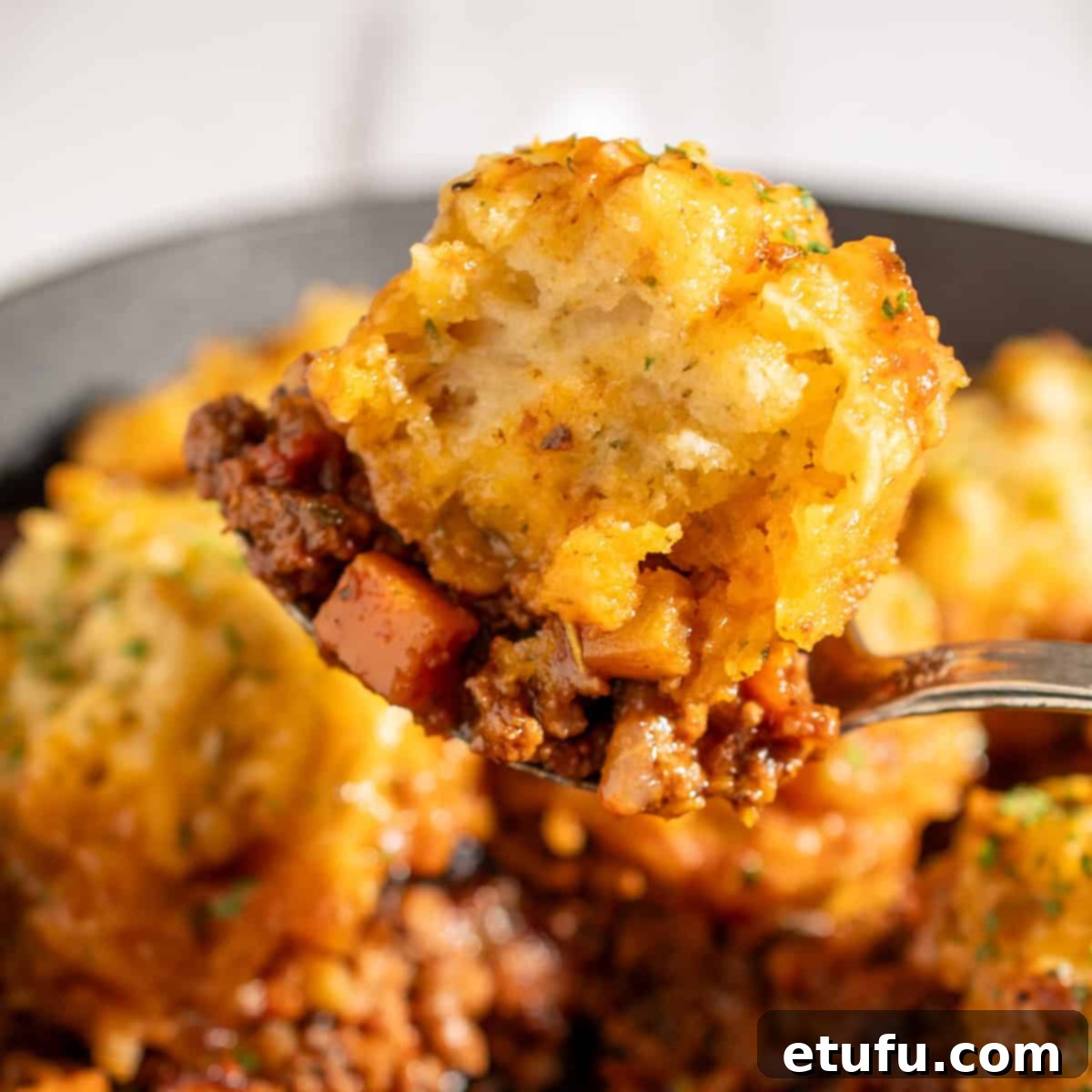A Culinary Journey: Exploring British Comfort with Mince and Dumplings
There’s an undeniable magic in a dish that instantly transports you to a place of warmth and nostalgia. For many across the United Kingdom, particularly in the chilly climes of the North East of England, that dish is a hearty bowl of mince and dumplings. This quintessential British comfort food is more than just a meal; it’s a culinary embrace, perfect for chasing away the gloom of a cold winter’s evening or even brightening one of those unexpectedly damp summer days.
Our family cherishes this recipe as a staple for its incredible ability to provide warmth, sustenance, and cheer. The true beauty of this beloved dish lies in its elegant simplicity: requiring just a single pot, a handful of readily available ingredients, and a generous dose of love, it promises deep, soulful comfort with every spoonful.
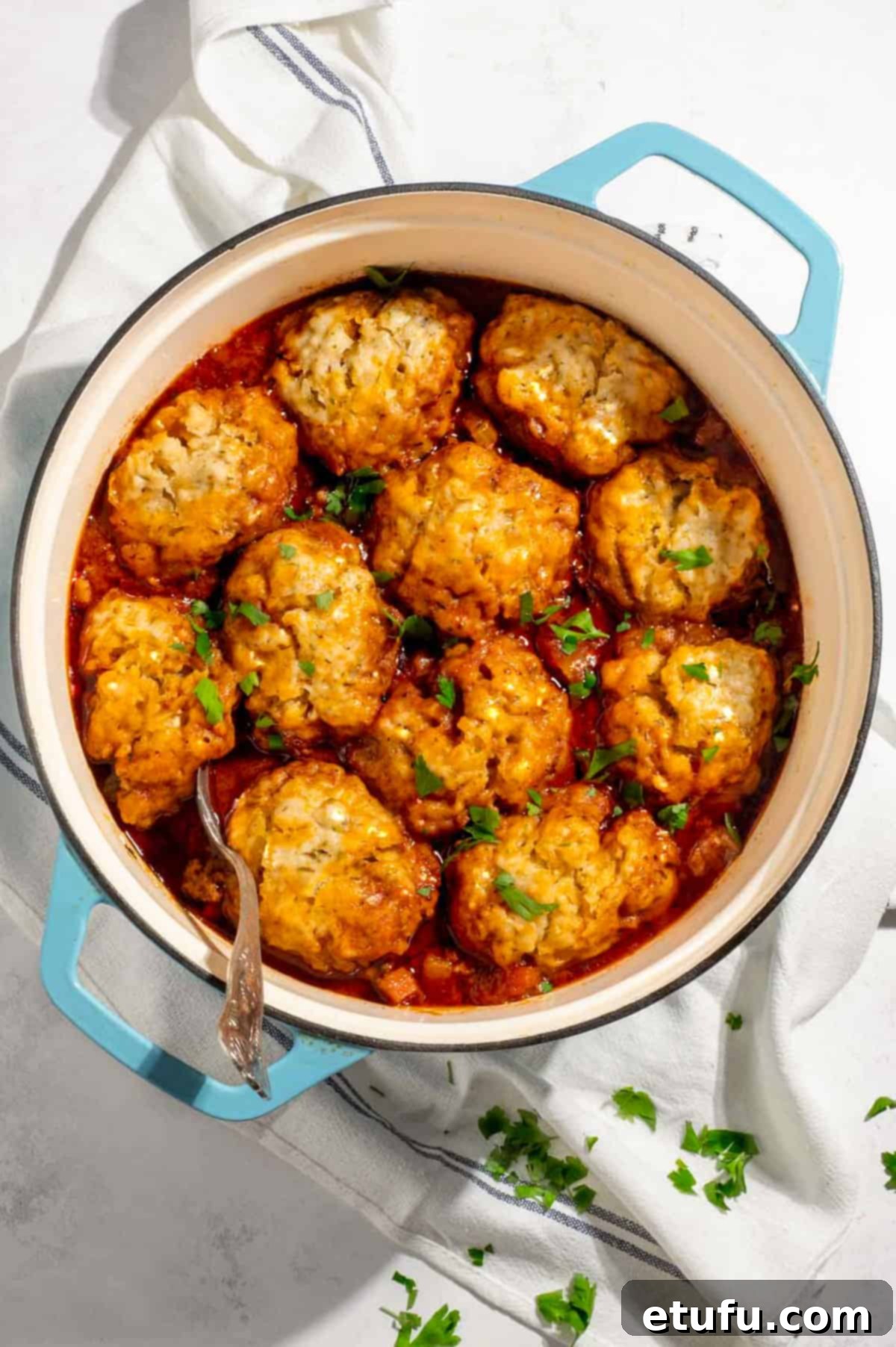
The Heartwarming Heritage of Mince and Dumplings
This classic, robust dish boasts a rich heritage, traditionally originating from the North East of England. Born out of necessity during times when food resources were scarce, mince and dumplings emerged as an economical yet incredibly nourishing meal that could feed a family. Its humble beginnings cemented its status as a staple in British kitchens, a testament to its satisfying flavour and filling nature.
While the most authentic version features light and airy suet dumplings, their versatility means you can easily adapt the recipe. Butter or vegetable shortening can be used just as effectively, offering a slightly different but equally delicious texture. For our friends across the Atlantic, these dumplings share a kinship with American biscuits, making it simple to incorporate your favorite biscuit recipe if suet is hard to come by. This delightful beef mince stew, crowned with fluffy dumplings, is truly a dish that warms you from the inside out, offering a sense of security and well-being that even your coziest blanket can’t quite match. It’s a deeply nostalgic taste of proper British comfort food that resonates with generations.
Fast Facts: The United Kingdom

| Location | The United Kingdom (UK) is an island nation situated in North-western Europe, bordered by the Atlantic Ocean to the west and the North Sea to the east. It is a sovereign state comprising four distinct countries: England, Scotland, Wales, and Northern Ireland. Its strategic location has played a pivotal role in its history and global influence. |
| Capital | London. As the bustling capital, London is a global hub for finance, culture, fashion, and history. It’s home to iconic landmarks, world-class museums, and a vibrant multicultural population, making it one of the most visited cities in the world. |
| Language | While English is the official and most widely spoken language, the United Kingdom boasts a fascinating linguistic tapestry. Welsh is prominent in Wales, and the UK recognizes twelve other indigenous languages, including Scottish Gaelic, Cornish, and Manx, alongside three distinct sign languages. This rich diversity reflects the deep cultural history of the various regions within the UK. While English dominates, efforts are made to preserve and promote its lesser-used languages. |
| Population | With a population of approximately 66.8 million people, the UK is one of the most densely populated countries in Europe. This diverse population contributes to the country’s vibrant cultural landscape, driving innovation and shaping its unique identity. |
| Historical Trivia | A fascinating piece of history reveals that after William the Conqueror’s Norman invasion in 1066, French supplanted English as the official language of England for nearly 300 years. Many early English kings, such as Richard the Lionheart and Edward Longshanks, were more fluent in French and often spent significant portions of their reigns in France. It wasn’t until the accession of Henry IV, over two centuries after the Norman Conquest, that an English king was truly fluent in the English language, marking a significant shift in the nation’s cultural and linguistic identity. |
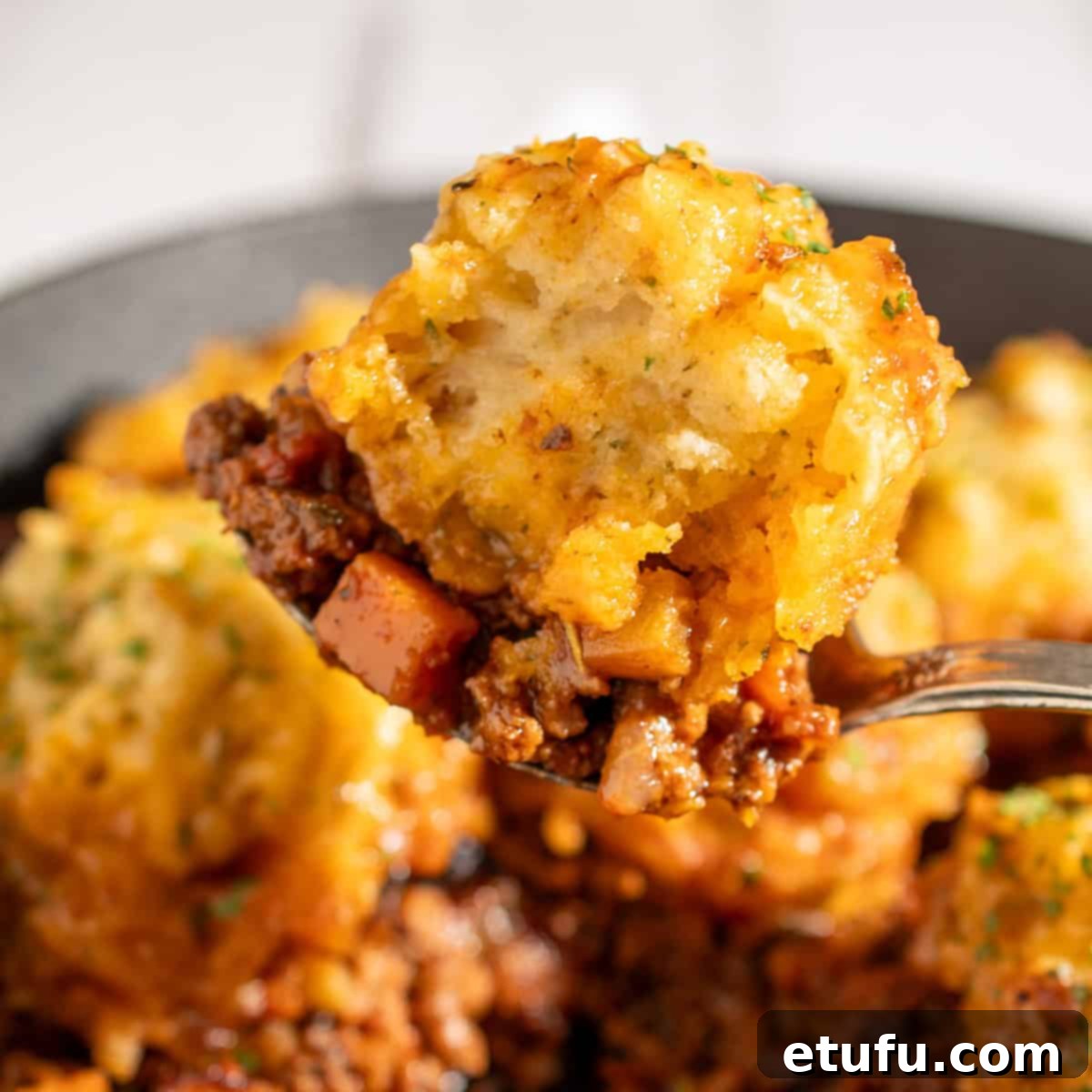
Why You’ll Adore This Mince and Dumplings Recipe
This classic British comfort food isn’t just delicious; it’s a culinary triumph for many reasons. Here’s what makes our Mince and Dumplings recipe an absolute favorite:
- Ultimate One-Pot Comfort: Imagine a single pot delivering a complete, hearty meal. This recipe promises exactly that. It’s designed to warm your soul and lift your spirits, especially on those chilly, grey days when only truly wholesome food will do.
- Melt-in-Your-Mouth, Herby Dumplings: The star alongside the rich mince is undoubtedly the dumplings. Our recipe ensures they are incredibly light, fluffy, and infused with aromatic herbs, offering a delightful texture and burst of flavor that perfectly complements the savory beef.
- Budget-Friendly & Wholesome: This dish is a lifesaver for your wallet without compromising on nutrition. It cleverly combines protein, a medley of fresh vegetables, and satisfying carbohydrates all in one go, making it an incredibly economical and balanced meal for the whole family.
- Effortlessly Customizable & Prep-Ahead Friendly: Flexibility is key in any busy kitchen. This recipe allows for endless customization – swap vegetables, adjust seasonings, or even experiment with different meats. Plus, it’s fantastic for meal prepping; leftovers freeze beautifully, ready for another comforting meal whenever you need it.
- A Guaranteed Crowd-Pleaser: From toddlers to grandparents, this rib-sticking, satisfying meal is universally loved. Its familiar flavors and comforting texture make it a reliable choice for family dinners or gatherings, ensuring empty plates and happy smiles all around.
Essential Ingredient Notes and Smart Substitutions
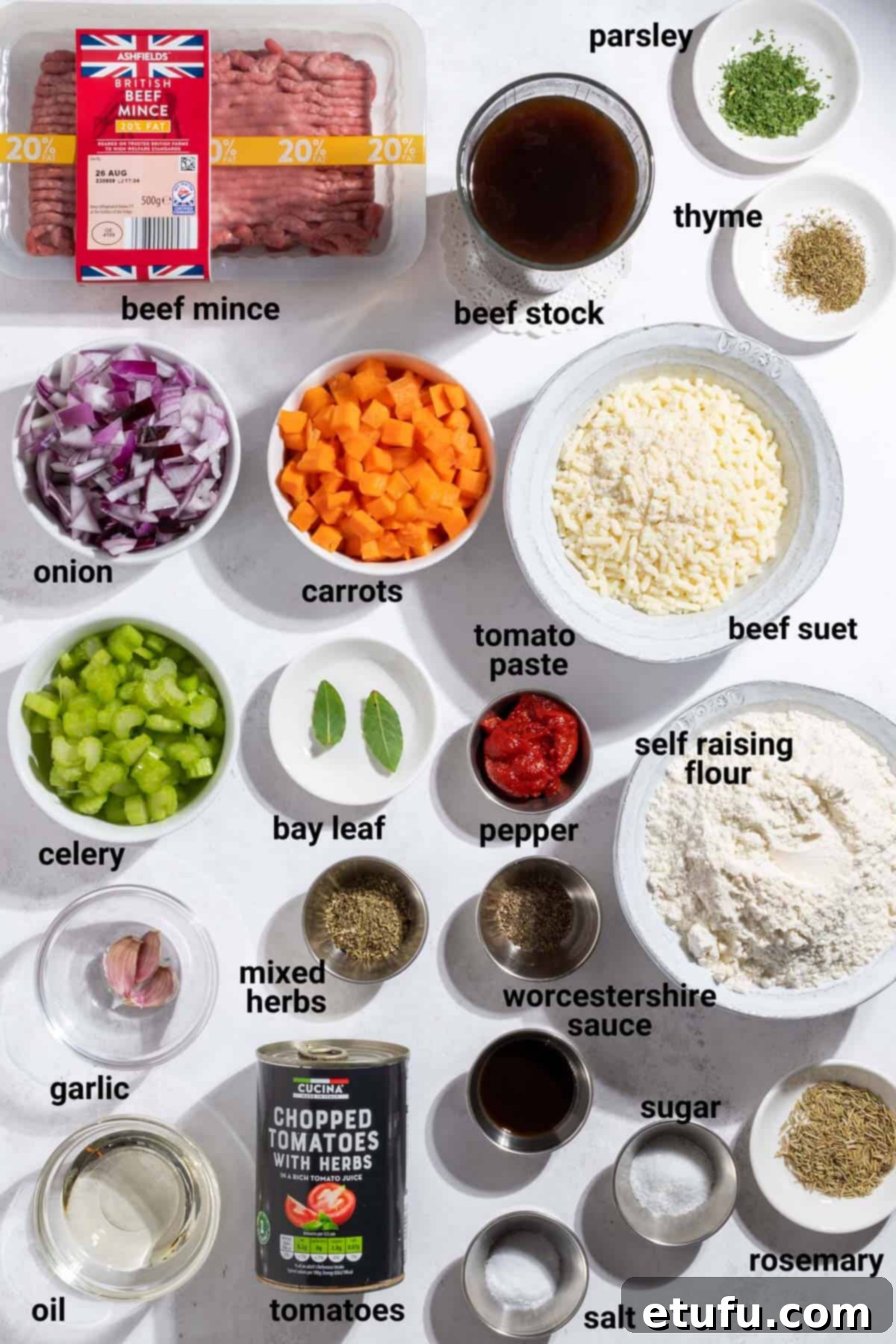
The Foundation Vegetables
Our recipe uses a classic aromatic base of onions, carrots, and celery – often referred to as a mirepoix. Onions are absolutely fundamental for building the deep, savory flavor profile of the mince. However, you have complete freedom to swap out the carrots and celery for your family’s favorite vegetables. Consider adding sweet peas, crisp green beans, kernels of sweetcorn, earthy mushrooms, or even chunks of potato for an even heartier stew. The goal is to maximize flavor and nutrition while catering to your taste preferences.
Selecting Your Beef Mince
For the richest flavor and most succulent texture in your mince, we highly recommend using beef mince with around 20% fat content. This higher fat percentage renders down during cooking, imparting incredible depth and juiciness to the stew. If you opt for leaner mince (such as 5% fat), you might find the dish benefits from a little extra beef stock added during the simmering stage to ensure it remains moist and flavorful. Adjusting the fat content can significantly impact the final mouthfeel of the dish.
A Touch of Sugar
The inclusion of a small amount of sugar might seem unusual in a savory dish, but it plays a crucial role. It effectively balances the natural acidity of the canned chopped tomatoes and tomato purée, preventing the stew from tasting too sharp and creating a more rounded, harmonious flavor. Feel free to adjust the quantity or omit it entirely if you prefer a less sweet profile, though a hint of sweetness can truly elevate the overall taste.
Understanding Tomato Purée
It’s important to clarify the terminology: in the UK, “tomato purée” refers to what is commonly known as “tomato paste” in other parts of the world, particularly in the US. This is a very thick, concentrated dark red paste, packed with intense tomato flavor, typically sold in small tubes or cans. Ensure you are using this concentrated paste and not a lighter tomato sauce or passata, as the richness it provides is key to the mince’s depth of flavor.
Dried Herbs: The Aromatic Powerhouses
For the beef mince, we find that a teaspoon of Herbs de Provence creates a beautifully fragrant and complex flavor profile that pairs exceptionally well with this rustic dish. However, culinary creativity knows no bounds! Feel free to substitute with your preferred dried mixed herbs, such as Italian seasoning, or elevate the freshness by using finely chopped fresh herbs like thyme, rosemary, or marjoram.
When it comes to the dumplings, a blend of dried thyme, rosemary, and parsley adds a wonderful, subtle aroma. These herbs infuse the fluffy dough with an earthy, savory note that complements the rich stew below. Don’t hesitate to experiment with other fresh or dried herbs like delicate dill, peppery tarragon, aromatic sage, or vibrant chives. Tailor the herb blend to your personal taste to make the dumplings truly your own.
The Magic of Shredded Beef Suet
Shredded beef suet is our secret weapon for achieving truly traditional, light, and wonderfully rich dumplings. It’s a classic British ingredient that’s incredibly easy to use and imparts a unique, savoury richness without the need for laboriously rubbing butter into flour. Brands like Atora are widely available in the UK, but any good quality supermarket brand of shredded suet will deliver excellent results.
If suet isn’t readily available where you are, or if you simply prefer an alternative, there are excellent substitutes. You can use an equal weight of cold butter (cubed and rubbed into the flour), vegetable suet, or vegetable shortening. For those looking to make suet-free dumplings, we’ve provided detailed instructions further down in the recipe section, ensuring everyone can enjoy this classic dish.
Expand Your British Culinary Repertoire
- Creamy Chicken, Leek and Bacon Pie
- The Very Best Devilled Sausages
- Beef Curry with Coconut Milk
- Nepalese Chicken Curry
Step-by-Step Guide to Perfection
Crafting the Rich Beef Mince
1. Begin your culinary adventure by heating the oil in a large, heavy-based casserole dish or a sturdy cast iron pot over medium heat. A good quality pot ensures even heat distribution, preventing hot spots and allowing your ingredients to cook uniformly.
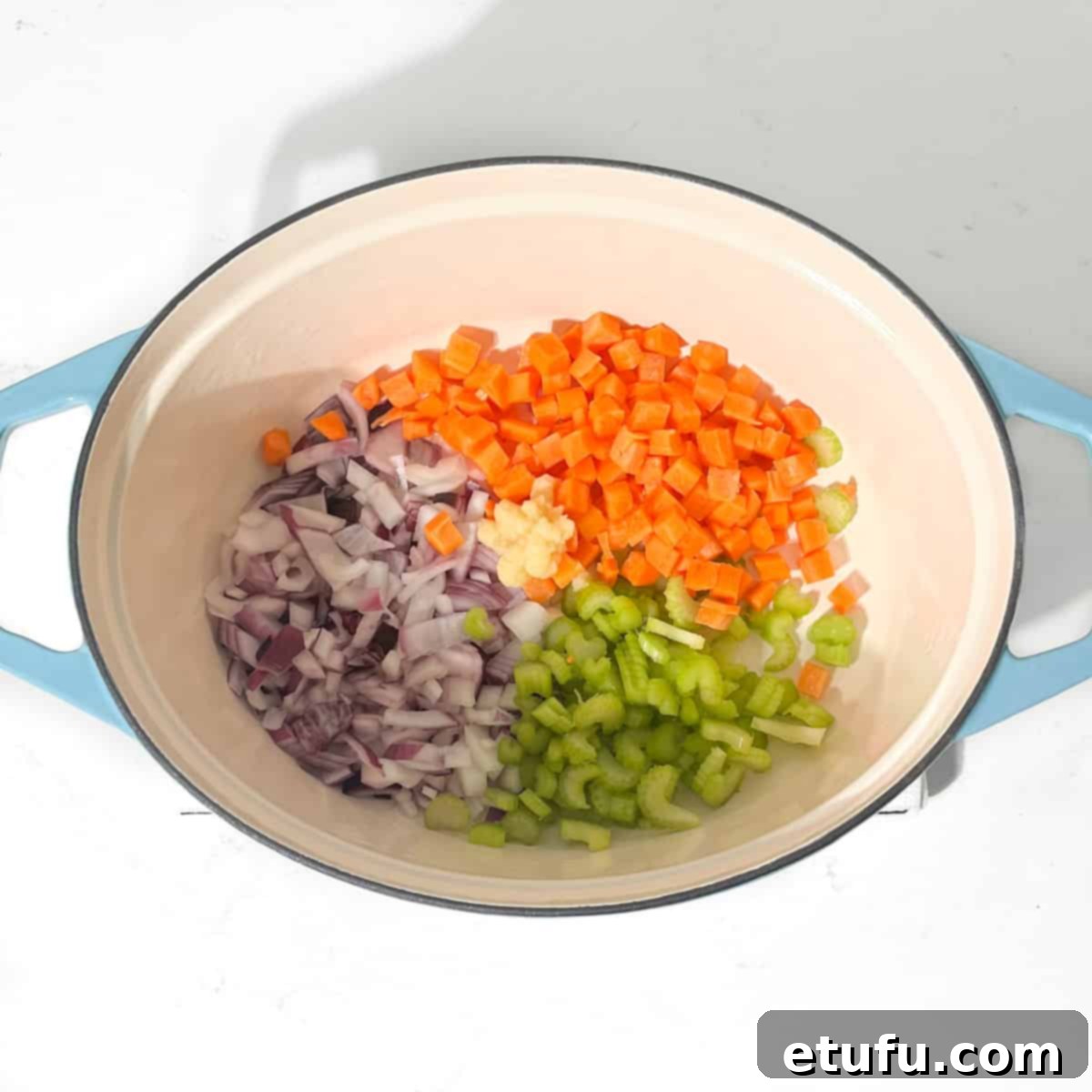
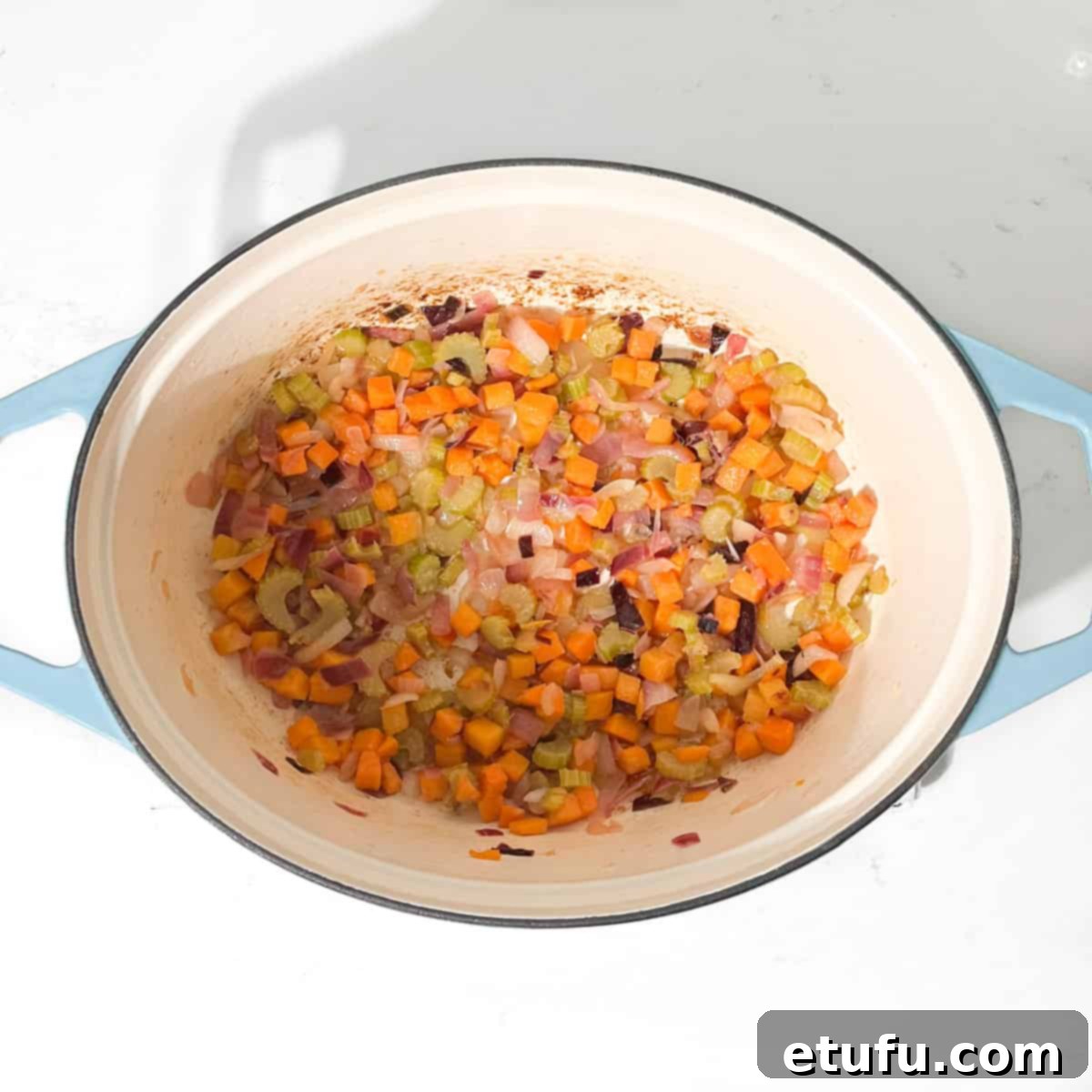
2. Once the oil shimmers, add your finely chopped onions, diced carrots, thinly sliced celery, and fragrant minced garlic to the pot. This aromatic base is essential for building the deep flavor of your stew.
3. Reduce the heat to medium-low and gently sauté the vegetables for 13-15 minutes. Stir frequently to ensure they soften evenly and develop a light golden-brown hue. If the vegetables appear too dry or begin to stick to the bottom, add a small splash of water to loosen them and prevent burning.
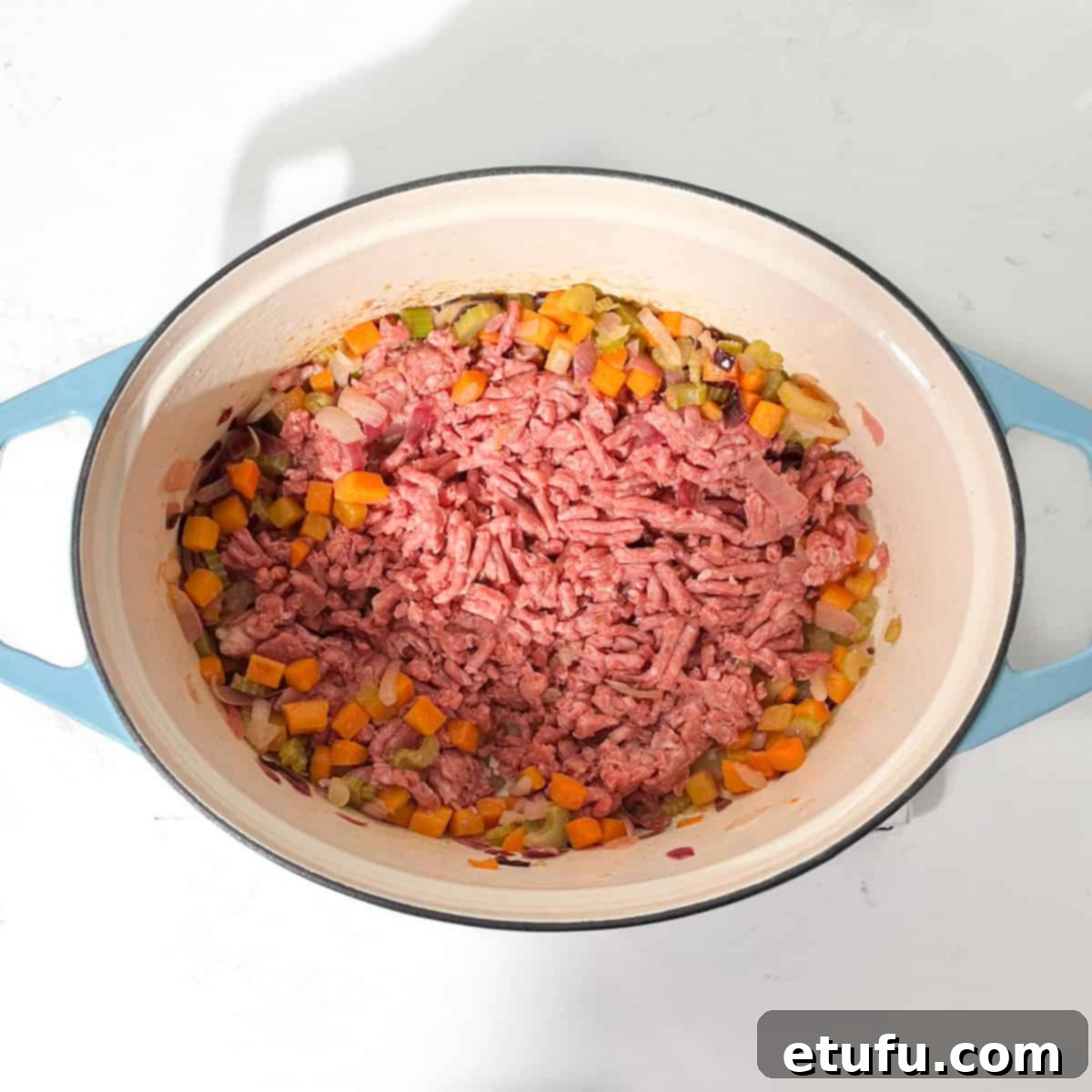
4. Next, add the beef mince to the softened vegetables. Use a sturdy fork or wooden spoon to break up the mince, ensuring it separates into fine crumbles rather than clumping together.

5. Increase the heat slightly and cook the beef mince for approximately 5 minutes, stirring continuously. Continue cooking until it is thoroughly browned and all pinkness has disappeared. This step is crucial for developing rich, savory flavors.
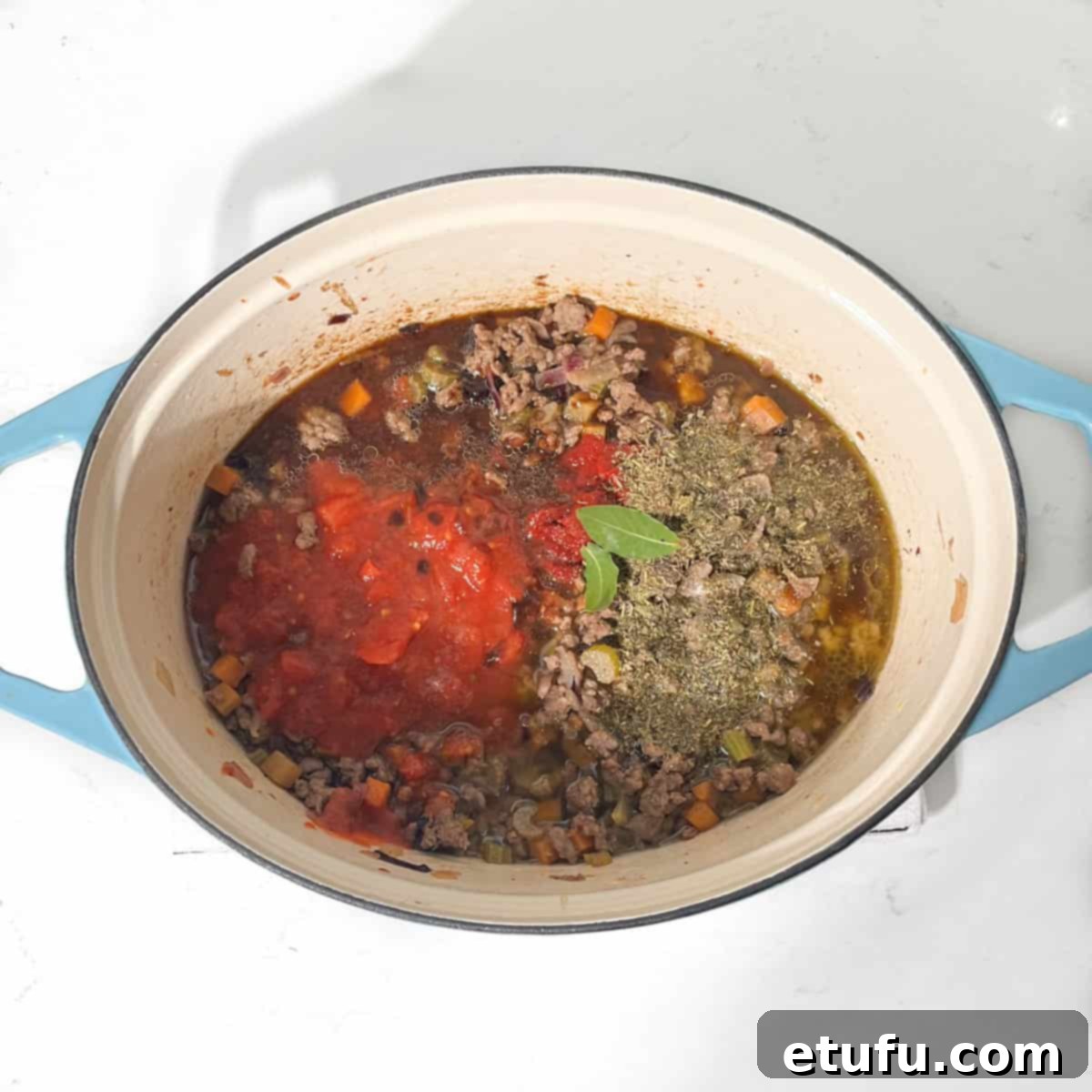
6. Now, it’s time to build the gravy. Stir in the canned chopped tomatoes, concentrated tomato purée, a tablespoon of sugar (to balance acidity), bay leaves, dried Herbs de Provence, Worcestershire sauce, salt, a generous grinding of black pepper, and the prepared beef stock. Mix everything thoroughly to combine.
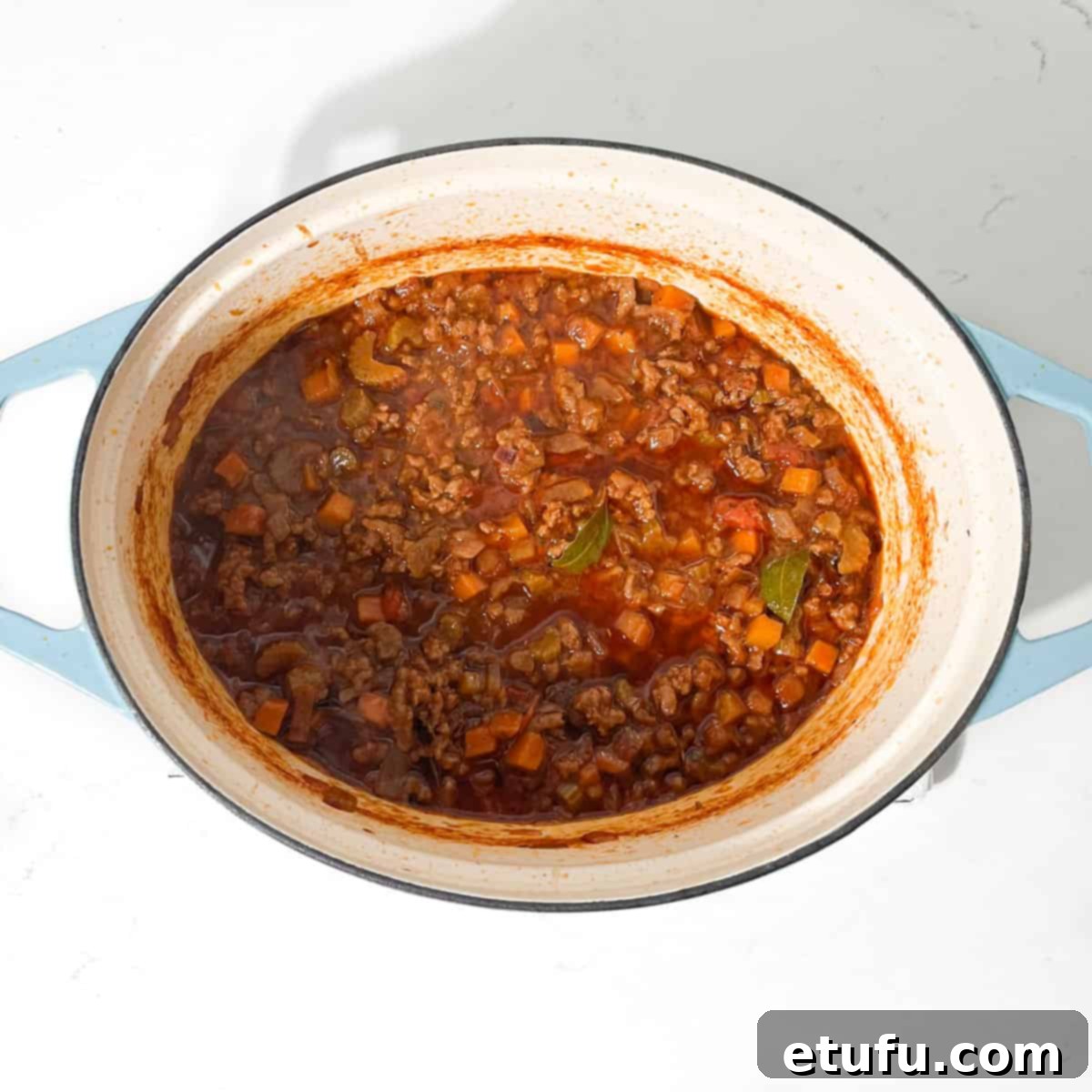
7. Reduce the heat to low and allow the mince to simmer gently for approximately 18 minutes. During this time, the gravy will thicken slightly, developing rich, deep flavors. It should remain somewhat saucy, as you’ll need enough liquid to steam the dumplings. Taste and adjust the seasoning as needed. If the mince becomes too dry, add a splash more water or stock. Conversely, if it’s too thin, you can thicken it with a tablespoon of flour mixed with a little water, or a few gravy granules, and cook for an additional few minutes.
Preparing the Fluffy Dumplings
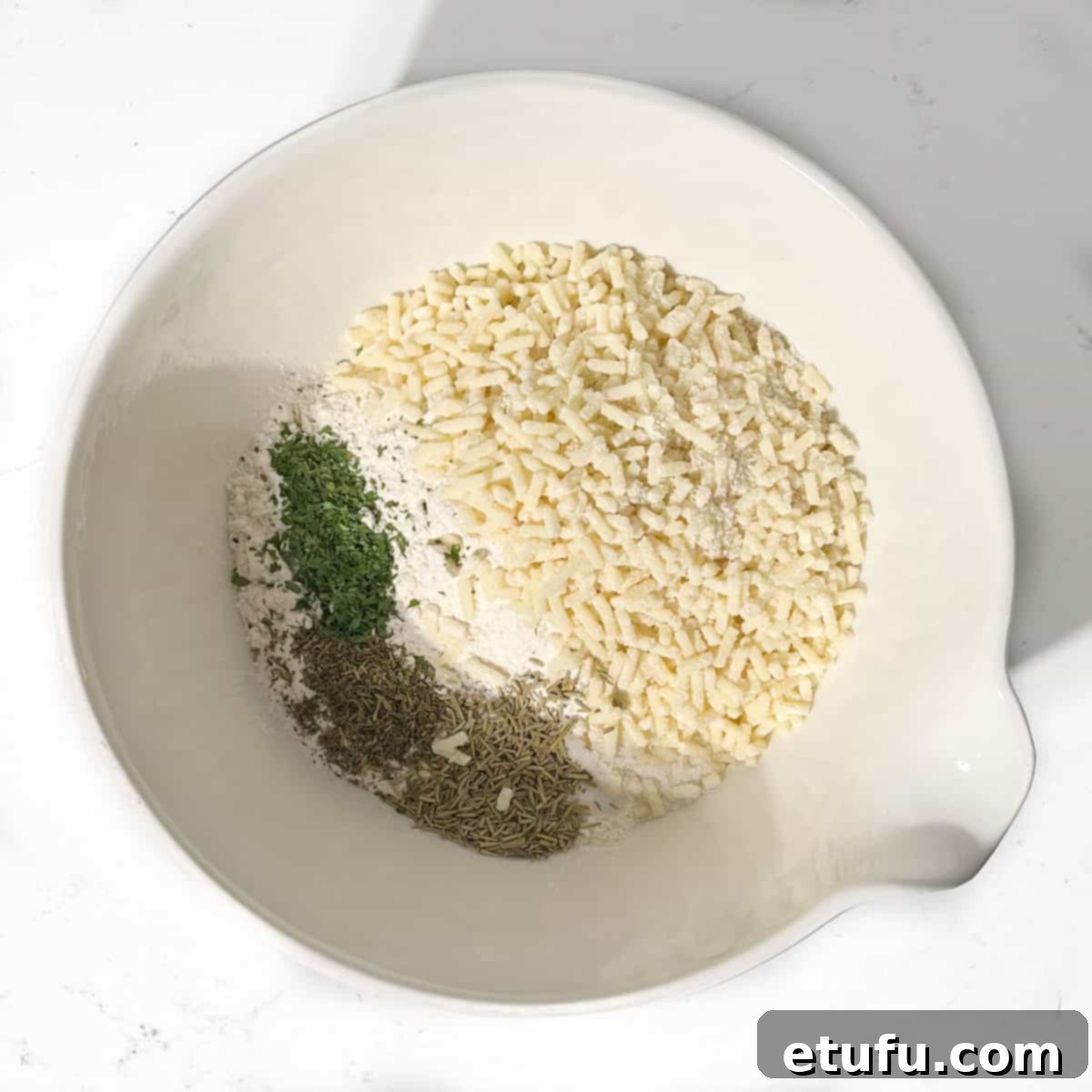
1. Approximately 10 minutes before your mince is ready, begin preparing the dumpling dough. In a large mixing bowl, combine the self-raising flour, shredded beef suet, a pinch of salt, and your chosen dried herbs (thyme, rosemary, and parsley are recommended for a classic flavor).

2. Create a well in the center of the dry ingredients. Gradually add 180-200ml of cold water, mixing it with the dry ingredients until a soft, pliable, and slightly spongy dough forms. A personal preference for truly light dumplings is a dough that’s a little on the sticky side, rather than too dry.
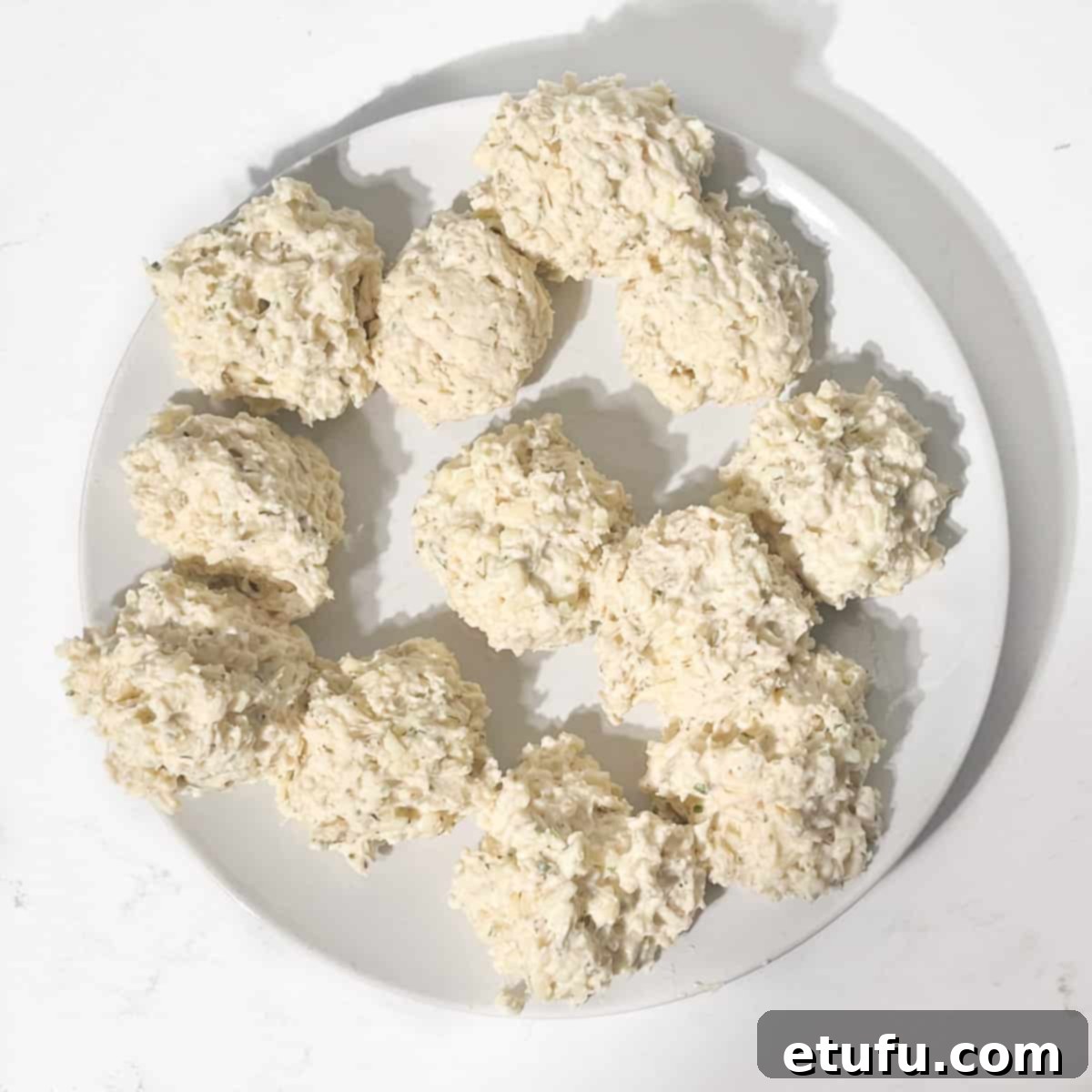
3. Lightly flour your hands to prevent sticking. Gently shape the dough into small, round balls, each slightly larger than a ping pong ball. Handle the dough with care to maintain its lightness.
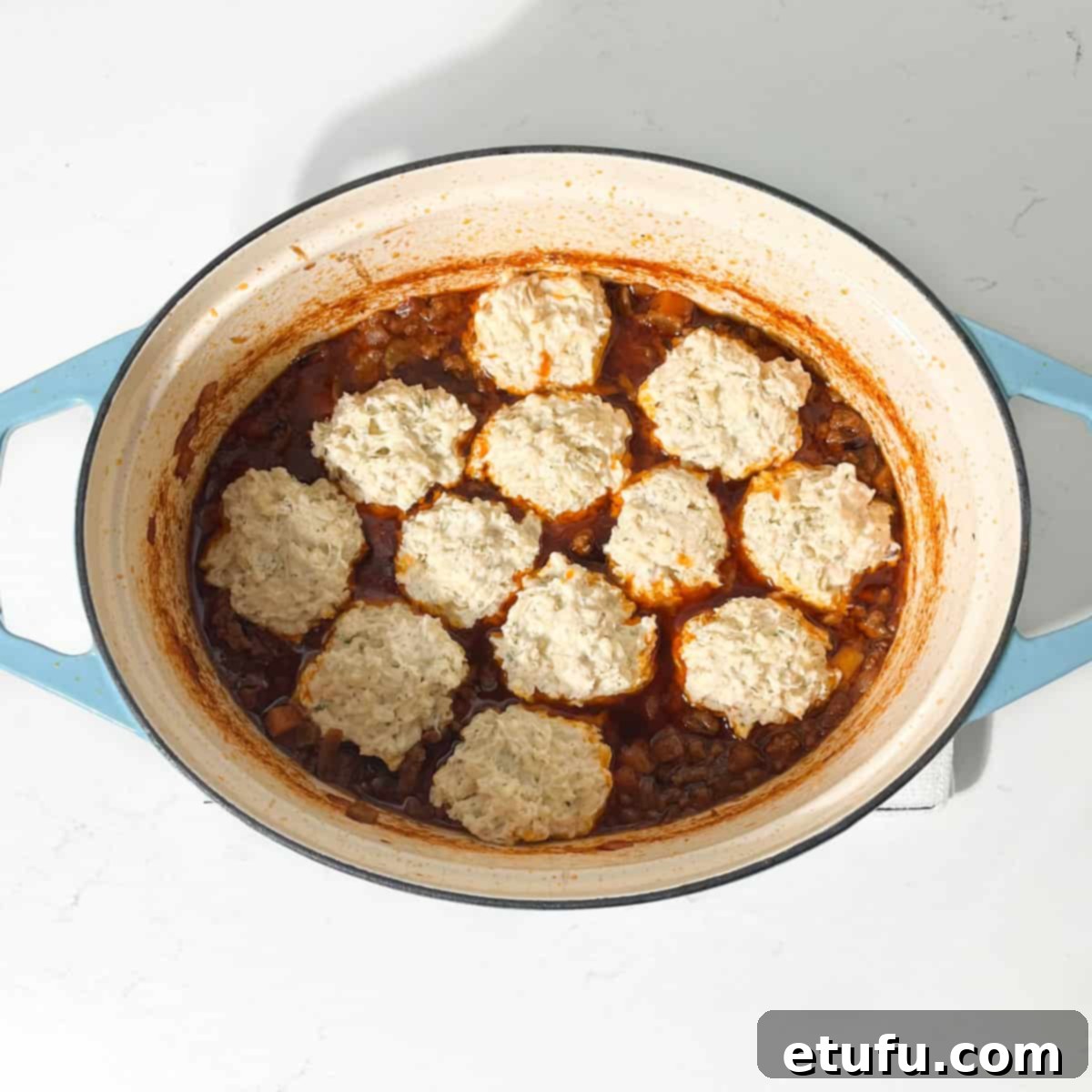
4. Once the mince is perfectly simmered and ready, carefully drop the prepared dumpling balls onto its surface. Ensure you space them out adequately, as they will expand significantly during cooking.

5. Immediately seal the pot tightly with its lid and return it to the stove over medium heat. Allow the mince and dumplings to cook undisturbed for an additional 20 minutes. This steaming process is vital for the dumplings to rise beautifully and cook through completely.

6. Once cooked, you may sprinkle fresh herbs, such as chopped parsley, over the top for a pop of color and extra freshness. Let the stew rest, covered, for 5 minutes before serving. This allows the flavors to meld and the gravy to settle, ensuring a perfect spoonful every time.
Serving Suggestions for Your Mince and Dumplings
While Mince and Dumplings is a complete meal in itself, pairing it with a simple side can elevate the dining experience. A side of creamy mashed potatoes or plain boiled potatoes is a classic choice, perfect for soaking up every drop of that rich gravy. Steamed green vegetables like broccoli, green beans, or cabbage add freshness and a touch of vibrancy to the plate. For those who enjoy a bit of texture, a crusty bread roll is ideal for mopping up the delicious sauce. A crisp green salad can also provide a refreshing contrast to the hearty stew, balancing the richness with lightness.
Effortless Dumplings Without Suet
If you prefer to make your dumplings without suet, or if it’s simply unavailable, butter or vegetable shortening are excellent alternatives. Follow these simple steps for equally delicious results:
- In a mixing bowl, combine 250g of self-raising flour with half a teaspoon of salt and your choice of dried or fresh herbs. Next, either grate 125g of very cold butter (or vegetable shortening) directly into the flour mixture, or cut it into small cubes.
- Using your fingertips, gently rub the butter into the flour until the mixture resembles coarse breadcrumbs. Avoid overworking the dough to ensure light and fluffy dumplings.
- Gradually add enough cold water, a few spoonfuls at a time, mixing with your hands or a wooden spoon until a firm but pliable dough is formed.
- Divide the dough into individual round dumplings, each slightly larger than a ping pong ball. Handle the dough lightly to maintain its airy texture.
- Carefully place these suet-free dumplings on top of your simmering mince, ensuring there’s a little space between each for them to expand during cooking. Proceed with the remaining cooking instructions as detailed in the main recipe.
Expert Tips for the Perfect Mince and Dumplings
Achieving the perfect mince and dumplings is simple with a few key techniques:
- Choose a Heavy-Based Pot: Invest in a thick, heavy-bottomed pot, ideally cast iron or enamel. This ensures even heat distribution, preventing your mince from sticking or burning and promoting consistent cooking throughout.
- Brown the Mince Thoroughly: Patience is a virtue when browning the mince. Do not rush this step! Allowing the beef to properly caramelize and brown deeply builds a foundational layer of rich, savory flavor that is essential to the stew.
- Simmer Low and Slow: Once the ingredients are combined, maintain a gentle, low heat during simmering. This allows all the flavors to meld and develop slowly, creating a deeply satisfying gravy without the risk of drying out the sauce.
- Crucial Seasoning Check: Before introducing the dumplings, always taste the stew. Adjust the salt, pepper, and other seasonings as needed. Ensuring the mince is perfectly seasoned at this stage guarantees a balanced and delicious final dish.
- Maintain Gravy Consistency: It’s vital that the sauce isn’t too thick before adding the dumplings. The dumplings will absorb some liquid as they steam. If the mince appears too dry, add a splash more water or beef stock to ensure there’s enough moisture for the dumplings to cook properly.
- Handle Dumplings Lightly: When mixing and shaping the dumpling dough, be gentle. Overworking the dough can result in dense, tough dumplings. You want them to be light and fluffy, so a light touch is key.
- Give Dumplings Room to Grow: When placing the dumplings on top of the stew, arrange them with adequate space between each. They will expand significantly as they cook, and overcrowding can hinder their rise and even cooking.
- Ensure Even Steaming: A tightly fitted lid is crucial during the dumpling cooking phase. This traps the steam, allowing the dumplings to cook evenly and puff up beautifully, resulting in that desirable light and fluffy texture.
- Allow the Stew to Rest: Once the cooking is complete, resist the urge to serve immediately. Let the pot sit, covered, for 5 minutes. This resting period allows the flavors to settle and intensify, and the gravy to thicken slightly, making for a more cohesive and enjoyable meal.
Creative Variations for Your Mince and Dumplings
This versatile dish lends itself beautifully to a variety of customizations:
- Crispy Dumpling Topping: For those who love a golden, slightly crispy top on their dumplings, simply place the uncovered pot under a preheated grill (broiler) for about 5 minutes. Watch them very carefully, as they can brown and crisp up extremely quickly!
- Alternative Meats: While beef is traditional, feel free to experiment with other types of mince. Lamb mince offers a richer, gamey flavor, while chicken or turkey mince provides a lighter alternative. Adjust cooking times slightly as needed.
- Diverse Vegetable Additions: Enhance the nutritional value and flavor profile by incorporating a wider array of vegetables. Consider parsnips, turnips, sliced mushrooms, tender green beans, sweet potato cubes, vibrant red bell pepper, sweet peas, or corn kernels. Add them during the simmering stage, ensuring they cook until tender.
- Flavored Dumplings: Elevate your dumplings with extra flavors. Mix grated cheese (such as mature cheddar), finely chopped fresh chives, or a pinch of dry mustard powder into the dough for a delightful twist.
- Rich Liquid Bases: Instead of beef stock, try using Guinness or another dark stout for a deeper, malty flavor, or red wine for a sophisticated, rich gravy. These additions will transform the mince into a gourmet stew, perfect for special occasions.
Storage Solutions
Leftover mince and dumplings are a treat! Store any uneaten portions in an airtight container in the refrigerator for up to 3-4 days. To reheat, simply warm gently on the hob (stovetop) over medium-low heat or in the microwave until it is piping hot all the way through. If the stew has thickened too much in the fridge, add a splash of warm stock or water to loosen it to your desired consistency. While the dumplings might lose a touch of their initial fluffiness upon reheating, their delicious flavor remains intact.
Freezing for Later Enjoyment
Mince and dumplings freeze exceptionally well, making it an ideal candidate for batch cooking and future meals. Allow the stew to cool completely to room temperature before transferring it into freezer-safe airtight containers or heavy-duty freezer bags. It can be stored in the freezer for up to 3 months.
When you’re ready to enjoy it, thaw the frozen stew overnight in the refrigerator. Reheat gently on the hob, adding a little extra stock or water if needed to achieve the desired gravy consistency. Please note that while the mince will retain its delicious quality, the dumplings may become slightly softer or break apart a little after freezing and reheating. However, they will still contribute a wonderful texture and flavor to the dish.

Easy Mince and Dumplings: A British Classic
When the chill sets in or the rain refuses to let up, there’s nothing more comforting than a steaming bowl of traditional British mince and dumplings. The beauty of this recipe lies in its simplicity: One pot, a few staple ingredients and a whole lot of heartwarming comfort for the entire family.
Main Course
British
10 minutes
56 minutes
1 hour 6 minutes
4 servings
962 kcal
Maretha Corbett
Equipment
- 1 large, lidded cast iron pot or heavy-based saucepan
Ingredients
For the Mince
- 2 tablespoons oil – such as vegetable or olive oil
- 150 grams finely sliced onion – roughly one large onion
- 150 grams diced carrots – roughly two large carrots
- 100 grams finely sliced celery – roughly two sticks of celery
- 3 cloves garlic, minced
- 500 grams beef mince – for best flavor, use 20% fat
- 400 grams can chopped tomatoes
- 2 tablespoons tomato purée – (tomato paste in the US)
- 1 tablespoon sugar – to balance acidity
- 2 bay leaves
- 1 teaspoon Herbs de Provence (mixed herbs)
- 1 tablespoon Worcestershire sauce
- 1 – 1½ teaspoon salt – to taste
- few generous grinds of black pepper
- 450 millilitre beef stock – made with two beef stock cubes, like Oxo
For the Dumplings
- 250 grams self-raising flour
- 125 grams beef suet – shredded, like Atora (see notes for substitutes)
- ½ teaspoon salt
- 1 teaspoon dried parsley – or 3 tablespoons fresh, chopped parsley
- 1 teaspoon dried rosemary
- 1 teaspoon dried thyme
- 180-200 millilitre cold water
Instructions
Make the Mince
- To make the mince, start by heating the 2 tablespoons oil in a large, heavy-based casserole or cast iron pot over medium heat.
- Once the oil is hot, add the 150 grams finely sliced onion, 150 grams diced carrots, 100 grams finely sliced celery, and 3 cloves minced garlic.
- Turn the heat down to medium-low and gently sauté the vegetables for 13-15 minutes, stirring frequently, until softened and lightly browned. Add a splash of water if the vegetables seem too dry or are sticking.
- Next, add the 500 grams beef mince to the vegetables and break it up using a fork.
- Cook the beef mince for approximately 5 minutes, stirring frequently until it browns and loses its pink hue.
- Stir in the 400 grams can chopped tomatoes, 2 tablespoons tomato purée, 1 tablespoon sugar, 2 bay leaves, 1 teaspoon Herbs de Provence, 1 tablespoon Worcestershire sauce, 1 – 1½ teaspoon salt, few generous grinds of black pepper, and 450 millilitre prepared beef stock.
- Reduce the heat to low and simmer the mince for 18 minutes until the gravy thickens slightly but remains a little saucy. Add water if it’s too dry and adjust the seasoning if needed. Important: Ensure there’s enough liquid in the mince before adding the dumplings, as some will evaporate during the next 20 minutes of cooking, which is needed to steam the dumplings. If the mince is too saucy, thicken with a tablespoon of flour or gravy granules and cook for a few more minutes.
Make the Dumplings
- About 10 minutes before the mince is done, start making the dumplings. In a large bowl, combine the 250 grams self-raising flour, 125 grams shredded beef suet, ½ teaspoon salt, 1 teaspoon dried parsley, 1 teaspoon dried rosemary, and 1 teaspoon dried thyme.
- Make a well in the center and gradually add 180-200ml cold water, mixing it into the dry ingredients to form a soft, pliable dough. Note: For light dumplings, we prefer a soft dough that’s a little on the sticky side.
- Lightly flour your hands, then shape the dough into balls just larger than a ping pong ball, handling the dough gently to keep it light.
- Once the mince is ready, carefully drop the dumplings onto the surface of the stew, spacing them out to allow for expansion.
- Seal the pot tightly with a lid and return it to the stove over medium heat. Allow it to cook for another 20 minutes or until the dumplings have risen well and are thoroughly cooked.
- You can now sprinkle over more herbs, such as fresh parsley, if you wish for garnish and added color. Let the stew rest for 5 minutes before serving.
Notes
Use a heavy-based pot: A thick, heavy-bottomed pot, like cast iron or enamel, will help cook your mince evenly without any hotspots.
Brown the mince well: Don’t rush this step! Take your time to brown the mince properly – it builds loads of flavor.
Simmer low and slow: Keep the heat gentle while simmering to let all the flavors develop without drying out the sauce.
Check the seasoning: Before adding the dumplings, give the stew a taste and adjust the seasoning. You want everything balanced just right before adding the dumplings.
Keep it saucy: Don’t let the sauce get too thick before adding the dumplings. If it looks a bit dry, add a splash more water or stock.
Handle the dumplings lightly: Be gentle when mixing the dough. Overworking it can make the dumplings tough – you want them light and fluffy.
Give the dumplings room: Space the dumplings out on top of the stew so they have room to rise and cook properly.
Steam them evenly: Make sure the pot is tightly covered so the dumplings steam evenly and stay nice and fluffy.
Let the stew rest: Once it’s cooked, leave the stew to sit for 5 minutes before serving to let the flavors settle.
Nutritional Data Disclaimer
Please keep in mind that the nutritional information provided below is calculated by a third party and we cannot guarantee its absolute accuracy. We strive to offer the most accurate information possible, but we do not take responsibility for any errors that may be present. The nutritional value of this recipe may vary depending on the exact brands and products used. We recommend consulting with a qualified healthcare professional or registered dietitian for personalized advice regarding your dietary needs.
Nutrition (per serving)
Carbohydrates: 64g |
Protein: 34g |
Fat: 63g |
Saturated Fat: 27g |
Polyunsaturated Fat: 4g |
Monounsaturated Fat: 25g |
Trans Fat: 2g |
Cholesterol: 110mg |
Sodium: 1744mg |
Potassium: 1129mg |
Fiber: 5g |
Sugar: 11g |
Vitamin A: 6565IU |
Vitamin C: 18mg |
Calcium: 127mg |
Iron: 6mg
For important food safety advice, including guidance on food allergies, please consult official guidelines.
More Beloved Recipes from the United Kingdom
- Tottenham Cake
- Fool-Proof 3-Ingredient Scones
- Creamy Chicken and Leek Pies with Puff Pastry
- Easy Chicken Sausage Rolls with Puff Pastry
- Homemade Mini Butter Chicken Pies
- Carrot and Swede Mash
- Cheese and Onion Pasties with Puff Pastry
- Posh Fish Finger Sandwich with Homemade Tartar Sauce
- Eggless English Pancakes (Thin Pancakes)
- Mini Homemade Sausage Rolls with Puff Pastry
Discover More Effortless One-Pot Wonders
- Creamy Butter Bean Curry
- Nepalese Chicken Curry
- Easy Oven-Baked Chicken Pasanda Curry
- Beef Trinchado (Portuguese-Inspired South African Beef Stew)
- Beef Curry with Coconut Milk
- Easy Chicken and Chorizo Jambalaya
